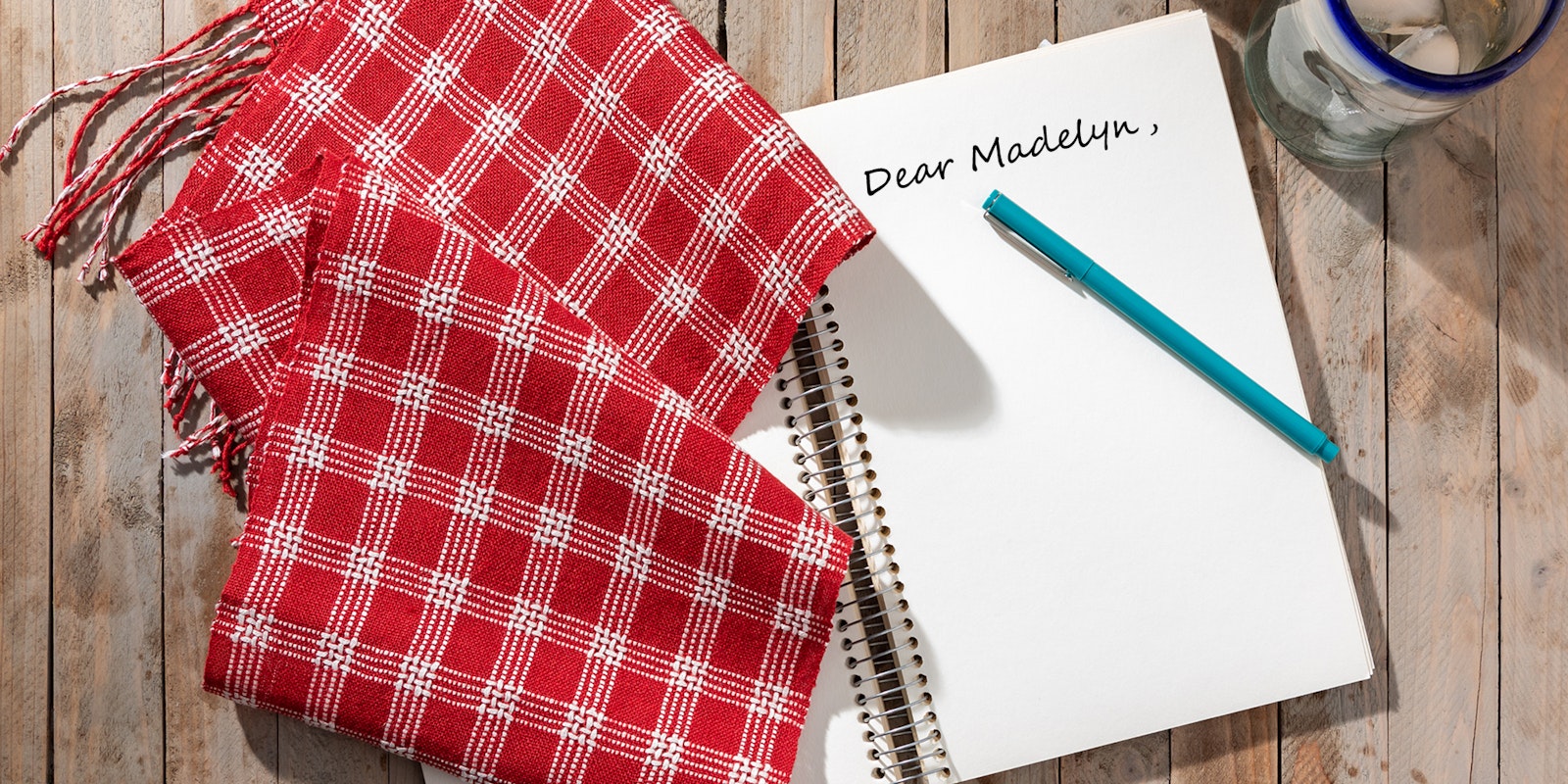Dear Madelyn,
I have a question about weaving with 60/2 silk (the sett will be 56 epi). What is the best method to warp? Front-to-back or back-to-front? Also, since there are more than 400 threads of the same color, do you recommend winding 2 threads together on the warping board?
—Kathy
Hi Kathy!
It’s always a good idea to consider several factors when choosing a warping method. Most of us become comfortable using one particular method, and we keep using it even when there are good reasons not to. 60/2 silk at about 15,000 yd/lb is a finer yarn than most of us use. A sett of 56 epi can be achieved by using an 8-dent reed with 7 ends in each dent and in a 12-dent reed with a sleying order of 5-5-5-4-5-4. 10-dent and 15-dent reeds can be used, but an exact sett of 56 epi is harder to achieve with them (I’m not sure how exact your sett needs to be).
If you warp front-to-back, you will sley the reed with many ends in each dent, no matter which reed you are using. If you thread in the usual front-to-back way by simply taking the threads at random from each dent, you will have a tangled mess when you beam. Twisting is bound to occur among the threads between the reed and the heddles. To avoid this, you will need to transfer the individual threading cross to the threading side of the reed, placing lease sticks in it when you do, so that you can take the threads in their exact order as you thread the heddles. With such fine threads (silk can be a bit sticky and have some static electricity), transferring the cross is not an easy task.
With back-to-front warping in the usual way, you will wind the threads through the cross on lease sticks as you beam. The threads will have a tendency to hang up at the cross, so beaming will be a slow process.
For fine threads, the easiest method to use is back to front with two crosses. You would make a threading cross at one end of the warp and a raddle cross at the other end. Your best bet is to use a 1/2 inch raddle and place 28 threads in each arm of the raddle cross. Tying the four arms of the threading cross to secure it, you will attach the raddle-cross end of the warp to the back apron rod, place the 28 ends in each slot of the raddle, and secure the raddle to the back beam. You will then beam the warp through the raddle teeth only (no lease sticks in place) until the threading cross comes to the position behind the shafts where you can insert the lease sticks in it for threading. The drawback to this method is that you need to beam the warp at even tension all the way across, or you won’t have an easy time getting the lease sticks in the threading cross (if your threads at the end of the warp are not even with each other there will be a bit of a mess to deal with). The narrower the warp, the easier this will be.
I would not wind two threads together on the warping board for front-to-back warping unless I separated them into anindividual cross. They are just too likely to twist enough to be a problem. There is a way to do this (put them in a one-and-one cross); you can find it in "Warping Your Loom". A paddle would make winding the warp a faster task. Winding 2 threads together would be fine; with the back-to-front and back-to-front-with-two-crosses warping methods.
—Madelyn

